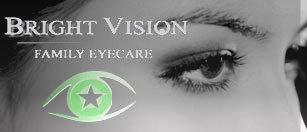
Vision Conditions
If your vision can be improved with the use of ophthalmic devices such as glasses, contact lenses, or LASIK, then you have a vision condition, not a medical problem. Examples of Vision conditions are:
Myopia (Nearsightedness)
Nearsightedness, or myopia , as it is medically termed, is a vision condition in which near objects are seen clearly, but distant objects do not come into proper focus. Nearsightedness occurs if your eyeball is too long or the cornea has too much curvature, so the light entering your eye is not focused correctly.
Nearsightedness is a very common vision condition that affects nearly 30 percent of the U.S. population. Some evidence supports the theory that nearsightedness is hereditary. There is also growing evidence that nearsightedness may be caused by the stress of too much close vision work. It normally first occurs in school age children. Since the eye continues to grow during childhood, nearsightedness generally develops before age 20.
A sign of nearsightedness is difficulty seeing distant objects like a movie or TV screen or chalkboard. A comprehensive optometric examination will include testing for nearsightedness. Your optometrist can prescribe eyeglasses or contact lenses to optically correct nearsightedness by altering the way the light images enter your eyes. You may only need to wear them for certain activities, like watching TV or a movie or driving a car, or they may need to be worn for all activities.
Refractive surgery or laser procedures are also possible treatments for nearsightedness as is orthokeratology. Orthokeratology is a non-invasive procedure that involves the wearing of a series of specially-designed rigid contact lenses to progressively reshape the curvature of the cornea over time.
Myopia Fig 1.1

Hyperopia (Farsightedness)
Farsightedness, or hyperopia , as it is medically termed, is a vision condition in which distant objects are usually seen clearly, but close ones do not come into proper focus. Farsightedness occurs if your eyeball is too short or the cornea has too little curvature, so light entering your eye is not focused correctly.
Common signs of farsightedness include difficulty in concentrating and maintaining a clear focus on near objects, eye strain, fatigue and/or headaches after close work, aching or burning eyes, irritability or nervousness after sustained concentration.
Common vision screenings, often done in schools, are generally ineffective in detecting farsightedness. A comprehensive optometric examination will include testing for farsightedness.
In mild cases of farsightedness, your eyes may be able to compensate without corrective lenses. In other cases, your optometrist can prescribe eyeglasses or contact lenses to optically correct farsightedness by altering the way the light enters your eyes.
Hyperopia Fig 1.1

Presbyopia
Presbyopia is a vision condition in which the crystalline lens of your eye loses its flexibility, which makes it difficult for you to focus on close objects.
Presbyopia may seem to occur suddenly, but the actual loss of flexibility takes place over a number of years. Presbyopia usually becomes noticeable in the early to mid-forties. Presbyopia is a natural part of the aging process of the eye. It is not a disease and it cannot be prevented.
Some signs of presbyopia include the tendency to hold reading materials at arm's length, blurred vision at normal reading distance and eye fatigue along with headaches when doing close work. A comprehensive optometric examination will include testing for presbyopia.
To help you compensate for presbyopia, your optometrist can prescribe reading glasses, bifocals, trifocals or contact lenses. Since presbyopia can complicate other common vision conditions like nearsightedness, farsightedness and astigmatism, your optometrist will determine the specific lenses to allow you to see clearly and comfortably. You may only need to wear your glasses for close work like reading, but you may find that wearing them all the time is more convenient and beneficial for your vision needs.
Since the effects of presbyopia continue to change the ability of the crystalline lens to focus properly, periodic changes in your eyewear may be necessary to maintain clear and comfortable vision.
Presbyopia Fig 1.1

Spots and Floaters
Spots (often called floaters) are small, semi-transparent or cloudy specks or particles within the vitreous, the clear, jelly-like fluid that fills the inside of your eyes. They appear as specks of various shapes and sizes, threadlike strands or cobwebs. Since they are within your eyes, they move as your eyes move and seem to dart away when you try to look at them directly.
Spots are often caused by small flecks of protein or other matter trapped during the formation of your eyes before birth. They can also result from deterioration of the vitreous fluid, due to aging; or from certain eye diseases or injuries.
Most spots are not harmful and rarely limit vision. But, spots can be indications of more serious problems, and you should see your optometrist for a comprehensive examination when you notice sudden changes or see increases in them.
By looking in your eyes with special instruments, your optometrist can examine the health of your eyes and determine if what you are seeing is harmless or the symptoms of a more serious problem that requires treatment.
Spots and Floaters Fig 1.1

Astigmatism
Astigmatism is a vision condition that occurs when the front surface of your eye, the cornea, is slightly irregular in shape. This irregular shape prevents light from focusing properly on the back of your eye, the retina. As a result, your vision may be blurred at all distances.
People with severe astigmatism will usually have blurred or distorted vision, while those with mild astigmatism may experience headaches, eye strain, fatigue or blurred vision at certain distances.
Most people have some degree of astigmatism. A comprehensive optometric examination will include testing to diagnose astigmatism and determine the degree.
Almost all levels of astigmatism can be optically corrected with properly prescribed and fitted eyeglasses and/or contact lenses.
Corneal modification is also a treatment option for some patients.
Astigmatism Fig 1.1

